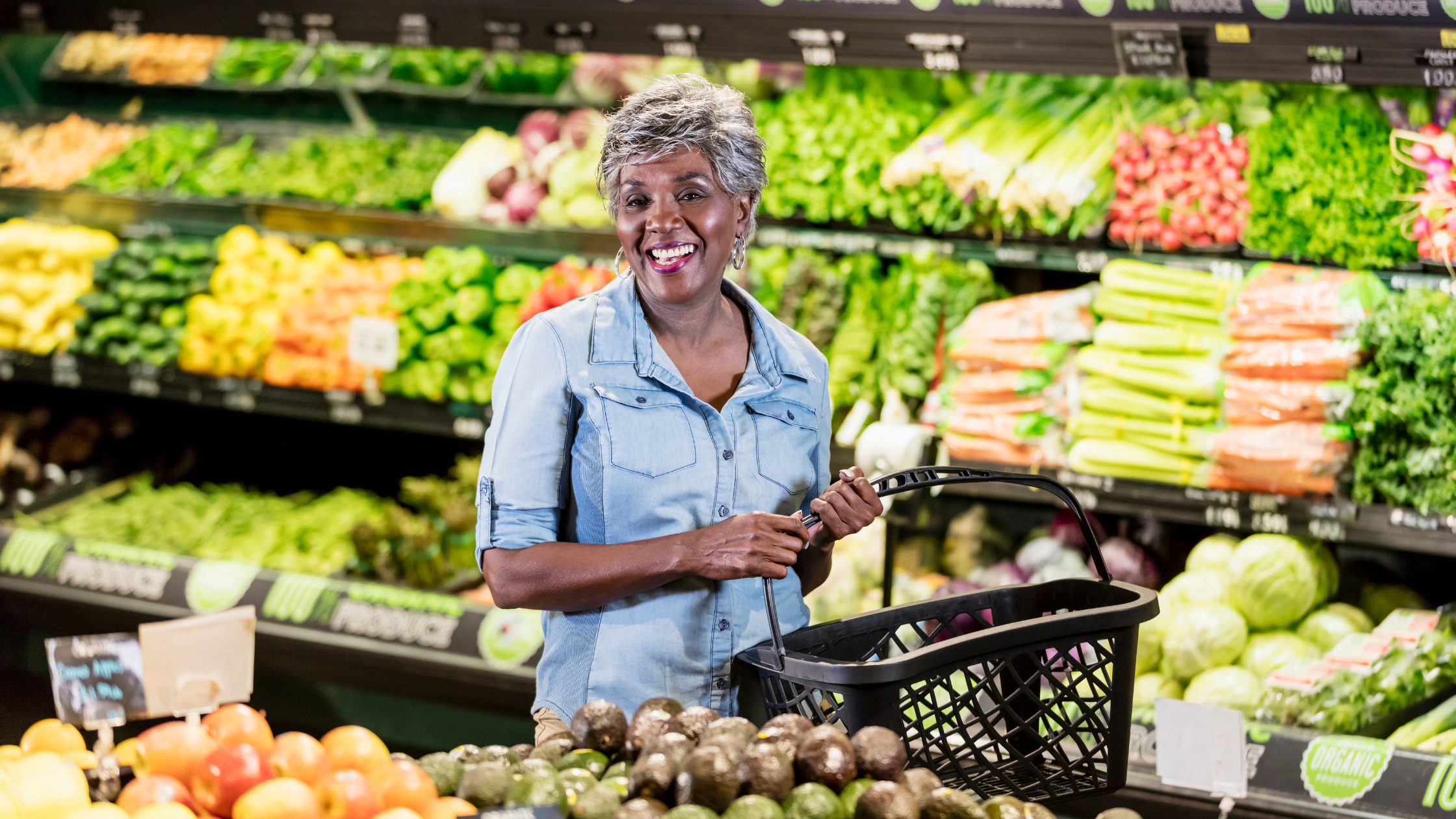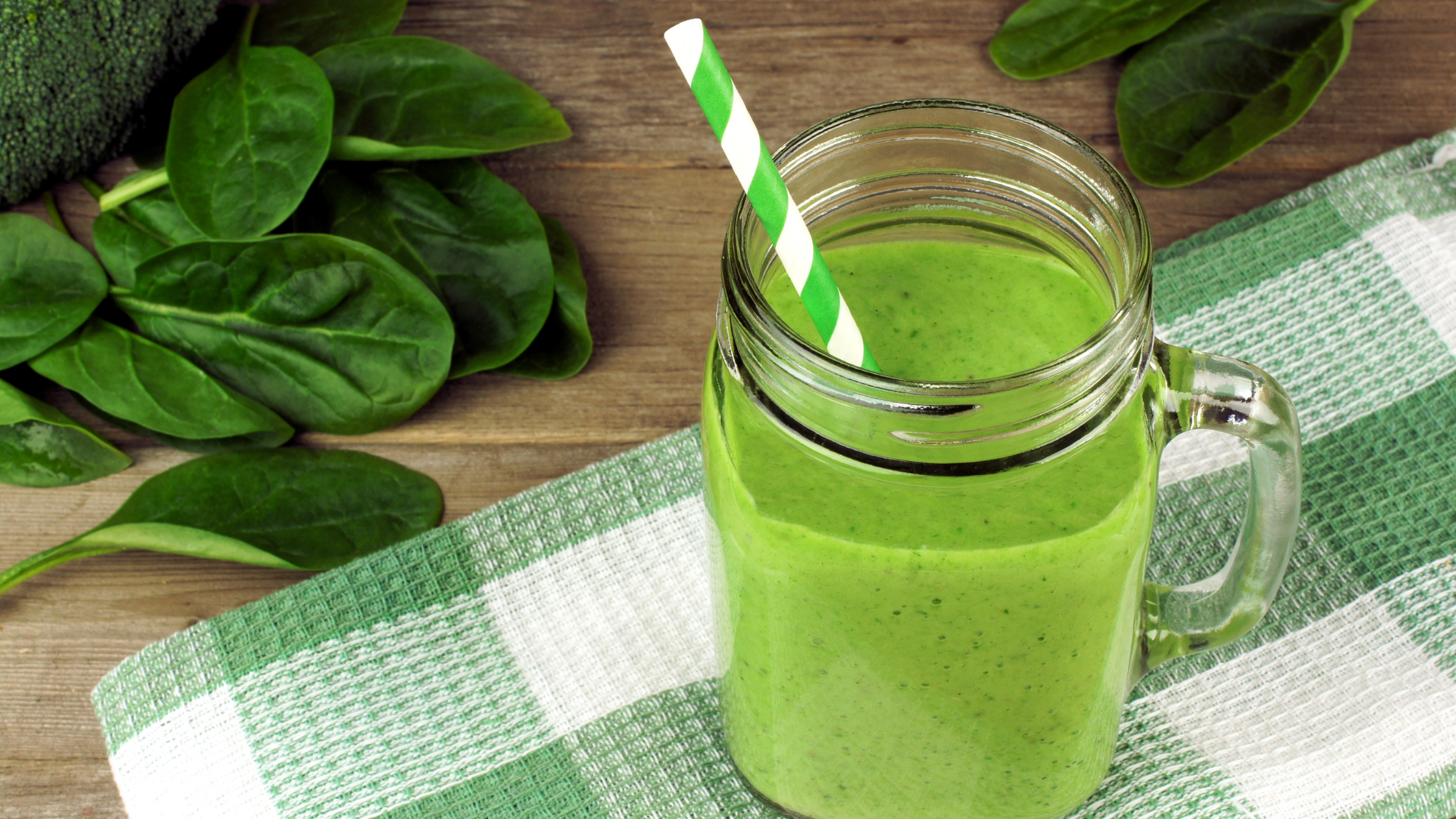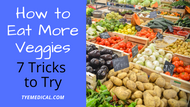How to Eat More Vegetables and Reap the Benefits (7 Tricks to Try)
Written by Tye Medical on Aug 24th 2021
Of course, fruits and veggies are good for you, but if you’re like most people, you struggle with how to eat more vegetables throughout the day. According to the Produce for Better Health Foundation, about nine out of ten Americans don’t eat enough fruits and vegetables. The Foundation’s 2020 State of the Plate report indicates a worsening trend, rather than increasing produce consumption, many Americans are eating even less.
Here is a recap of some familiar and surprising health benefits hidden in those fruits and veggies lurking in the back of your fridge—and seven tricks for incorporating more of them into your diet.
How Eating Fruits and Veggies Benefit Your Health

As you age, your body becomes more prone to specific diseases like gastrointestinal disorders, heart conditions, a weakened immune system, diabetes, and obesity. But when you include a variety of produce in your diet, the added nutrition can help counteract these conditions. A produce-rich diet can lower blood pressure and cholesterol and even reduce your risk of stroke, heart disease, and some cancers.
The high-fiber content of most fruits and vegetables also keeps your digestive tract running smoothly, preventing constipation and other gut trouble that often plagues older adults. Since fiber keeps you feeling fuller, longer, it also helps with weight management.
After age 50, you might struggle to absorb iron from food and supplements, but the ascorbic acid in many fruits and vegetables can help your body receive this vital mineral. But even more importantly, Frontiers in Aging Neuroscience has found that an increase in fruit and vegetable consumption reduces dementia risk, even after age 65.
How to Eat More Vegetables and Fruits for Better Health
U.S. Dietary Guidelines recommend eating a minimum of four and a half servings of produce daily. Since one serving is a half-cup, this equals two and a quarter cups of fruits and vegetables a day.
If you expected it to be higher, you’re not alone. But this means that achieving your daily intake is more attainable than you probably thought.
One big tip—aim to eat a variety to help you get the various nutrients you need for good health.
10 Tricks for Getting More Fruits and Veggies in Your Diet
1. Eliminate Junk Food from Your Cabinets

You probably already know the reason behind this one. The greater number of unhealthy food options you have available, the less likely you are to make healthy choices. Who doesn’t prefer a bowl of ice cream to carrot sticks? If you stockpile produce and clear out the junk, you set yourself up for success and better health. (And yes, researchers have studied this!)
2. Add Fruits and Vegetables to Your Daily Meals
When you add produce to dishes you eat regularly, it feels like less of a hardship. Adding berries or a banana to your cereal, yogurt, or oatmeal is a simple place to start. Other ideas include:
- Adding more veggies to your omelet
- Sprinkling veggie toppings on your pizza
- Including additional veggies on your sandwich
- Stirring greens into your casseroles, soups, or pasta
With a bit of thought and creativity, you can come up with other tasty ideas.
3. Try New Types of Produce

It’s easy to feel stuck in a vegetable rut, but your local supermarket is probably full of fruits and veggies you rarely eat or have never tried. Every time you go grocery shopping, pick up one produce item you’ve never tried or haven’t tasted in a long time. How long has it been since you’ve had eggplant, turnips, or kale? If you’re not sure how to prepare them, check out some recipes online.
4. Prepare Your Favorite Veggie Dishes Often
While you’re trying new things and incorporating variety, it helps to plan for your old favorites too. This way, you’ll always have something to fall back on and ensure that you’re meeting your nutritional goals. Keep these recipes handy when meal planning and making your shopping list.
5. Cook More Vegetarian Meals

If you want to learn how to eat more vegetables, try a meatless day once each week, and then incorporate more meatless days if it’s a hit. A plant-based diet has been shown to decrease the risk of certain cancers and many other diseases that plague aging adults. For more information on eating plant-based, check out our article, How to Prevent Cancer: Latest Research Is Shockingly Simple.
Also consider the Anti-Inflammatory Diet for a plant-based guide to eating.
6. Keep Canned and Frozen Veggies on Hand
Sometimes, you might not have time to prepare and cook fresh vegetables, or you might want them to have a longer shelf-life. Keeping frozen and canned varieties on hand ensures you never have to go without them. Beware of the higher sodium content in most canned vegetables and higher sugar content in most canned fruit.
Sometimes, you can buy low-sodium canned vegetables or rinse them before heating and eating to remove excess salt. Canned fruit is typically available packed in 100% juice rather than syrup, which is better for cutting sugar. But watch portion sizes. A little canned fruit can still add up to a lot of sugar compared to fresh.
7. Enjoy a Breakfast Smoothie

You can sneak in both a fruit and vegetable when you prepare a smoothie for your first meal of the day. Green smoothie lovers everywhere know this little secret: you can barely taste spinach or kale when it’s added to a tasty fruit smoothie. The internet is full of smoothie recipes, but watch for added sugars often found in protein powders and flavored yogurts.
If you use yogurt, choose plain Greek yogurt, and rely on the fruit to add sweetness. If it’s still not sweet enough for you, add some Stevia or a splash of fruit juice.
Eating for Bladder Health
Understanding how to eat more vegetables and fruits (and following through) is also good for your bladder. Most produce is either neutral or helpful to the urinary tract, preventing irritation that can lead to discomfort and inflammation.
But be sure to limit acidic fruits like citrus and veggies like spicy peppers to keep your bladder happy.
If you’re battling temporary or chronic bladder leaks, try our line of premium products that include Ultra-Thin Pads for lighter leaks and Protective Underwear for moderate-to-heavy leaks.
Not sure what product is right for you? Check out our Product Finder Tool.


